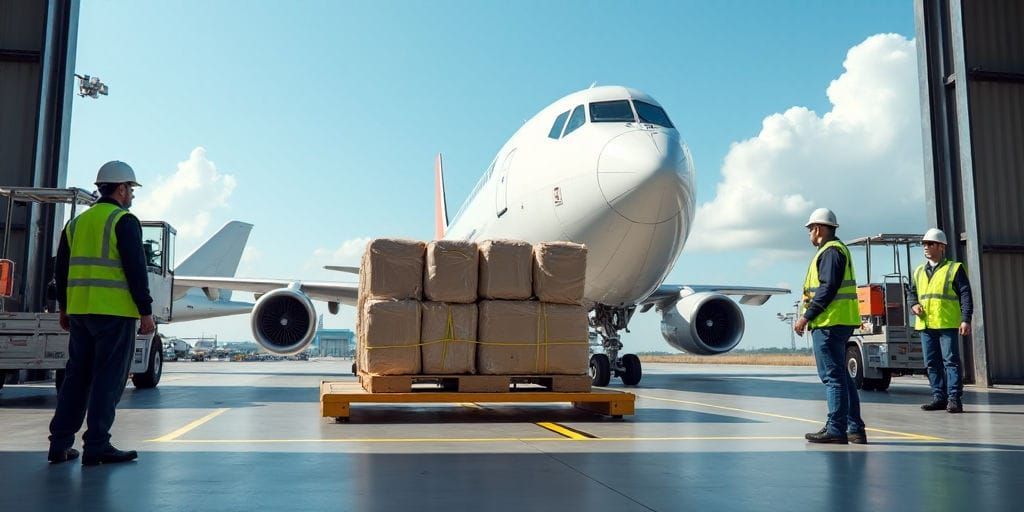Air cargo services play a vital role in global trade, connecting businesses and consumers across continents with speed and efficiency. Whether you’re exploring how to import from China to Pakistan or managing Pakistan cargo services for local distribution, the reliability and safety of air cargo are essential. Ensuring safety and security in air cargo services is crucial to protect valuable shipments, maintain smooth supply chains, and uphold trust between trading partners. This blog highlights important safety and security practices, international regulations, and the role of technology in air cargo services.
Understanding Safety and Security in Air Cargo
In air cargo services, safety and security are distinct but equally important concepts. Safety refers to protecting people, aircraft, and goods from accidental harm such as mishandling, equipment failure, or unsafe packaging. Security, on the other hand, focuses on preventing intentional threats like theft, terrorism, or smuggling.
Common risks include cargo damage, theft, terrorism-related threats, and mishandling during loading and unloading. Breaches in safety or security can lead to delayed shipments, financial loss, or reputational damage for logistics companies. For businesses that import from China to Pakistan or ship goods via China to Pakistan shipping routes, any disruption can cause significant setbacks.
International Regulations and Standards
Global air cargo operations follow strict regulations developed by organizations like the International Civil Aviation Organization (ICAO) and the International Air Transport Association (IATA). These standards include programs such as IOSA (IATA Operational Safety Audit), ISAGO (IATA Safety Audit for Ground Operations), and CEIV (Center of Excellence for Independent Validators), focusing on safety and security compliance.
Customs and border security regulations also play a major role in safeguarding air cargo. Ensuring full compliance with these rules helps logistics companies and carriers avoid legal issues and guarantees that cargo services run smoothly and safely across borders.
Safety Practices in Air Cargo Services
Proper packaging and labeling of goods are foundational safety practices in air cargo services. Items must be packed to withstand air transit stresses and clearly marked with handling instructions. Cargo restraint systems, like nets and locks, prevent shifting of goods inside the aircraft.
Training cargo handlers and ground staff in safe handling procedures helps minimize accidents. Special care must be taken when dealing with hazardous materials, adhering to the Dangerous Goods Regulations (DGR) issued by IATA. Additionally, regular aircraft maintenance and inspection of cargo equipment are vital to avoid mechanical failures that could compromise safety.
Security Measures in Air Cargo Services
Security starts with thorough screening of cargo using technologies like X-rays, explosive trace detection (ETD), and other explosive detection systems. Supply chains are secured through restricted access zones and monitored entry points.
Electronic tracking and real-time monitoring systems allow shippers to follow their shipments at every stage, reducing the risk of theft or loss. Cybersecurity is increasingly important for protecting digital cargo documentation and shipment data from cyber threats.
Strong collaboration between logistics companies, customs, and government agencies is essential to address security risks promptly and efficiently.
Role of Technology in Enhancing Safety and Security
Technology has transformed air cargo services by improving safety and security standards. Automation in cargo handling reduces human error. Emerging technologies like AI, IoT, and blockchain help track shipments accurately, detect fraud, and authenticate shipment data.
Biometric access control ensures only authorized personnel can enter sensitive cargo areas. Smart packaging embedded with GPS and temperature-control sensors provides real-time data about the condition and location of shipments, especially valuable for perishable or high-value goods.
Best Practices for Cargo Companies and Shippers
For importers and exporters, partnering with certified and experienced logistics providers improves compliance with safety and security requirements. Implementing background checks, ongoing training, and clear emergency response plans are key to minimizing risks.
Insurance and risk management strategies protect businesses financially against loss or damage. If you are considering how to import from China to Pakistan, choosing a logistics company with a strong safety and security culture is crucial for seamless DDP shipping (Delivered Duty Paid) services and reliable delivery.
Future Trends in Air Cargo Safety and Security
The future of air cargo services points toward increasing adoption of AI-driven threat detection systems and expansion of smart, fully automated cargo facilities. Green and sustainable safety practices will also gain importance, aligning with global climate goals. Worldwide collaboration on standardized protocols will further enhance the safety and security of international cargo shipping.
Conclusion
Robust safety and security practices form the foundation of successful air cargo services. They protect shipments, ensure timely deliveries, and build trust in global supply chains. For businesses involved in China to Pakistan shipping or Pakistan cargo services, adopting these best practices and leveraging technology will lead to smoother and safer operations.
If you are looking for a reliable partner to navigate the complexities of air cargo, EB Logistics offers expert cargo services designed with safety and security as top priorities. Trust EB Logistics to help you import from China to Pakistan efficiently and securely.
